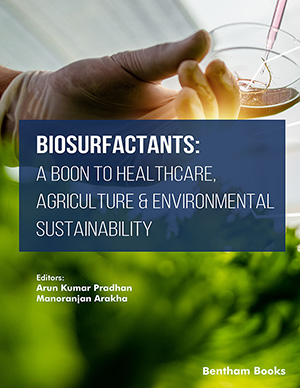Abstract
Modern compounds are called biosurfactants. Their application(s) interfere
with day-to-day activities of human beings. The economics of production place a
significant restriction on the broad applicability of biosurfactant(s). There can be many
ways to overcome this. This study primarily focuses on current technical advancements
in biosurfactant research. One of the innovations is the application of metabolomic and
sequence-based omics approaches, which have evolved into a high-throughput essential
tool for the detection of biosurfactant producers. Many bacteria produce ethanol,
microbial lipids, polyhydroxyalkanoates, and other value-added compounds in addition
to biosurfactants. The use of metabolic engineering techniques can further address
restrictions while also improving the overall process's economics. The yield of
biosurfactants is increased by the tailoring technique, which enables variation in the
composition of the congeners produced. By enhancing their bioavailability or water
solubility, bio-based surfactants have demonstrated promising effects in reducing
pollution in terrestrial and aquatic habitats. Due to the expanding market for
biosurfactants, this investigation identified technologically feasible developments in
biosurfactant research that might help researchers create more trustworthy and secure
technologies.
Keywords: Biosurfactants, Bioremediation, Metabolomics, Metagenomics, Metabolic engineering.






















